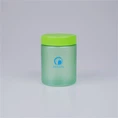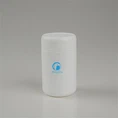Plastic bottles are widely used in daily life for water, juices, supplements, and many other products. A common question from consumers is: "Is it safe to leave plastic bottles in the sun?" The answer depends on the type of plastic, exposure time, and intended use. Let's look at the facts from a packaging and materials science perspective.
1. Heat and UV Exposure
When plastic bottles are exposed to direct sunlight, two main factors come into play: heat and ultraviolet (UV) rays.
Heat: High temperatures can cause the bottle to soften or warp, especially for thin-walled bottles. This may affect the sealing performance and lead to leakage.
UV Rays: Prolonged UV exposure can degrade certain plastics, making them brittle, discolored, or less durable over time.
2. Safety Concerns
Many bottles are made from PET (Polyethylene Terephthalate) or HDPE (High-Density Polyethylene). These materials are generally safe for food contact, but heat and sunlight can still cause changes:
Leaching of chemicals: Scientific studies show that extreme heat may increase the migration of substances from plastic into the contents. While levels are usually below international safety limits, it is best practice to avoid long exposure.
Taste and odor changes: Sunlight can accelerate reactions inside the liquid, especially in water or juice, leading to a "plastic" or stale taste.
Microbial growth: Warm temperatures encourage bacteria growth in opened bottles, making storage in the sun unsafe from a hygiene standpoint.
3. Best Practices for Storage
To ensure both product quality and consumer safety, it's recommended to:
Keep bottles in a cool, shaded area – Store away from direct sunlight whenever possible.
Avoid leaving bottles in cars – Temperatures inside vehicles can rise quickly, increasing risk.
Use dark or UV-resistant bottles – Some packaging is designed with UV-blocking additives or colored materials that offer better protection.
Consume opened bottles quickly – Once unsealed, liquids should not be left in hot or sunny conditions.
4. Industry Perspective
From a packaging manufacturer's point of view, plastics like HDPE and PET are engineered to perform well under normal distribution and storage conditions. They pass seal tests, drop tests, and high-temperature resistance tests before reaching the market. However, no plastic packaging is designed for long-term exposure to harsh sunlight. For brands, choosing the right material and adding UV-protection when needed is crucial for product stability.
















